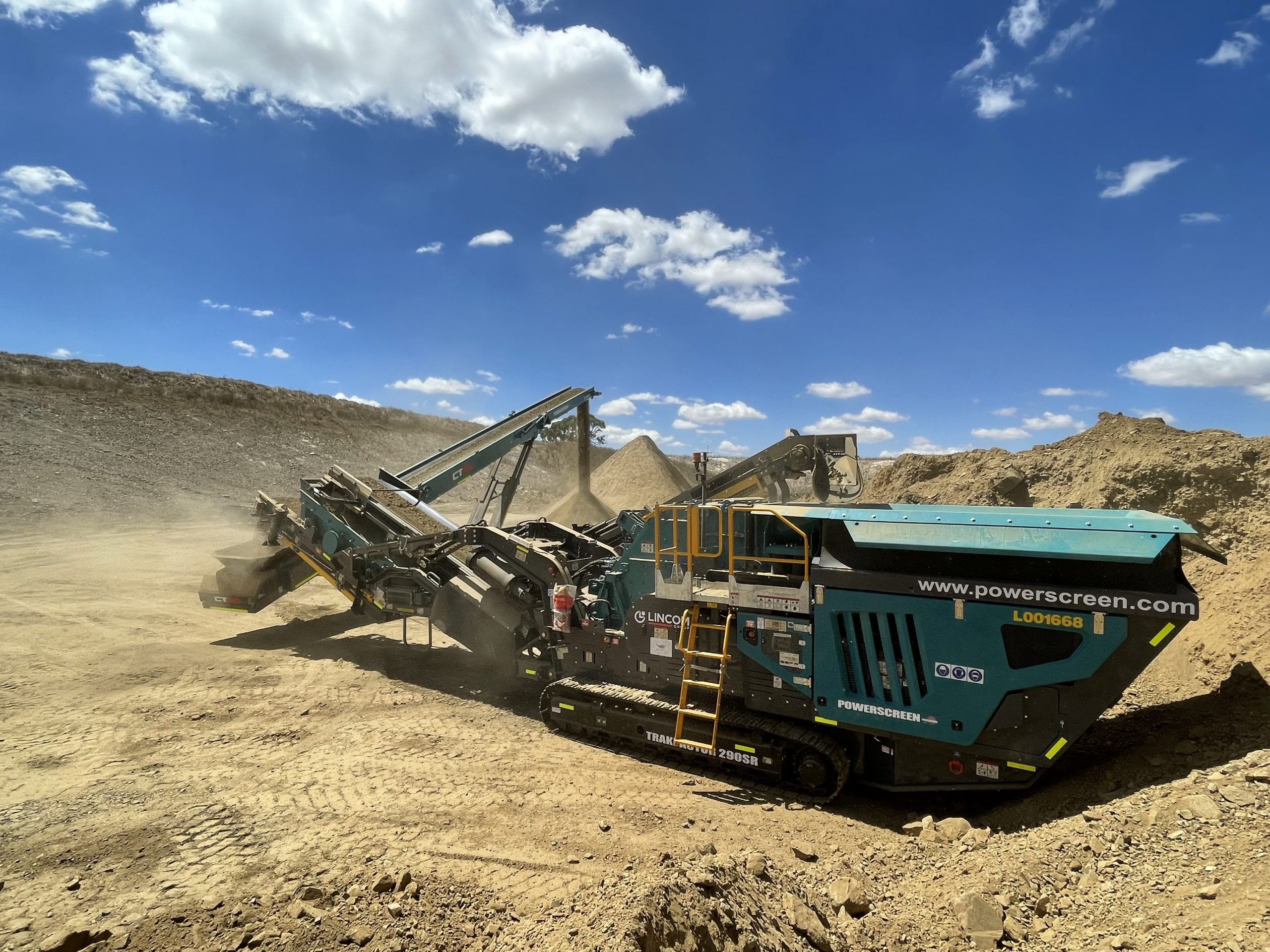Lincom Group has delivered the first Powerscreen Trakpactor 290SR in Australia, helping a contract crusher in regional South Australia maintain a rugged outback road network.
Powerscreen is an expert in the design and manufacture of mobile crushing and screening equipment, and Lincom is one of its 120 dealers around the world.
From its Ballarat office in Victoria – one of seven across the country – Lincom services the south and south-east of Australia for all of its crushing, screening, washing and conveying needs.
Lincom area sales manager Mark Quinn said the Powerscreen Trakpactor 290SR impact crusher was a no-brainer for a particular customer, as it attempted to get its road base material just right.
“They had their mind made up they were going to go down this route with this style of machine, so we just helped them understand the pros and cons and how Lincom could support them through the ownership,” Quinn told Quarry.
“Their main product is 40mm road base, so this machine’s screen box in the front and a recirculation conveyor meant they could get the material to size in one pass and avoid double-handling.”
Out on the roads of regional South Australia, oversize material in road base can lead to uneven asphalt and result in damaged tyres. And when running between more than a dozen quarry pits to crush material for different communities, this contractor could hardly afford to waste time managing poorly crushed material.
The 290SR took the worry out of work for this and future customers, Quinn said.
“Previously, they’d used a jaw crusher and there was a lot of oversize they couldn’t use on the roads, plus the throughput was also very slow,” he said.
“They’ve now got better quality control because of the screen box, which they can change out to suit whatever size material they want to produce.”
The transportable nature of the Trakpactor also suits this mobile contractor. While competing models with secondary conveyors can be too bulky or low to the ground, the 290SR is designed for mobility.
“They’ve got several pits and they’ll travel around each pit on a campaign of up to 30Ktpa overall,” Quinn said.
“The 290SR suited this kind of application because it’s very transportable and easy to pack up and set up. The recirculation conveyor is a good height for this as it’s not too close to the ground, making it easier to float around the region.”
As the Australian quarry industry has come to expect, the 290SR is a capable crusher for most materials such as aggregate for roadbase, concrete, asphalt and the hardest limestones going around.
To ensure the machine is keeping up pace, operators can monitor a range of metrics.
“The 290SR has telemetric functionality which allows satellite information like fuel usage, hours crushed, hours idle, tracking hours and more to be sent to mobile devices,” Quinn said.
“This is supported by Powerscreen and comes standard on all crusher models Lincom supplies.”
The recirculation conveyor can be controlled remotely and rotates up to 90 degrees away from the crusher for stockpiling, if necessary, improving the customer’s safety and ease of operation.
But for those not in need of a secondary screenbox and recirculating conveyor, there is the Trakpactor 290 – an equally capable yet simplified machine.
Quinn said these two machines fill a gap in Lincom’s range in both capacity and price.
“The model below this one is sometimes too small and the one above it can be too expensive for certain customers,” he said.
“So the 290SR fills an important gap in the market for Lincom and its customers.”
With the success of the first Australian example of the Trakpactor 290 range, time will only tell how the rest of the country will take to the model.
But for his part, Quinn said he expects it to become a big hit for like-minded customers.
“I expect plenty more orders in Australia as people take this customer as a good reference point,” he explained.
“It’s got a bigger chamber and a smaller footprint which suits it better to Australian conditions.”
This article appears in the April issue of Quarry Magazine.
